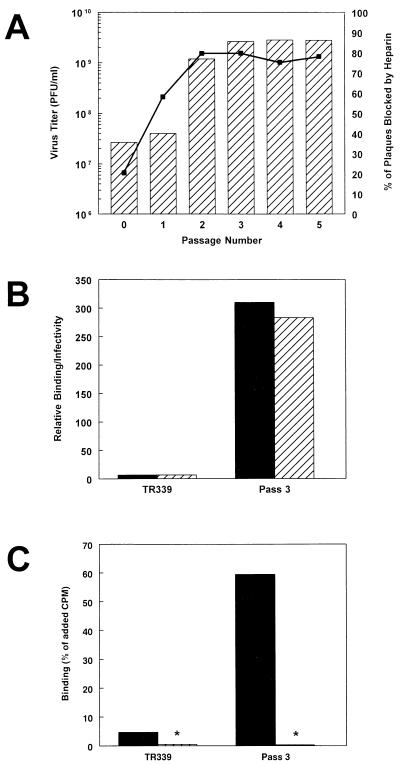FIG. 7.
Changes in titer, heparin competition, BHK cell binding, and heparin-agarose bead binding phenotypes of TR339 after passage in BHK cells. (A) BHK cell monolayers were infected at a multiplicity of infection of 1 followed by incubation for 20 h, harvesting of supernatants, and infection of new monolayers. This cycle was repeated for a total of five passages. Hatched bars (left y axis) indicate BHK cell titers for each of the five passages. The solid line (right y axis) indicates change in inhibition of BHK cell plaque-forming efficiency due to competition with soluble heparin (200 μg/ml). (B) Increases in BHK cell binding (solid bars) and specific infectivity (hatched bars) of virus derived from the third passage, compared to TR339 stock virus. (C) Increase in heparin-agarose bead binding (solid bars) but not BSA-agarose bead binding (hatched bars) of third-passage virus, compared to TR339 stock virus. ∗, binding of either virus to BSA-agarose beads was <1% of added cpm.

